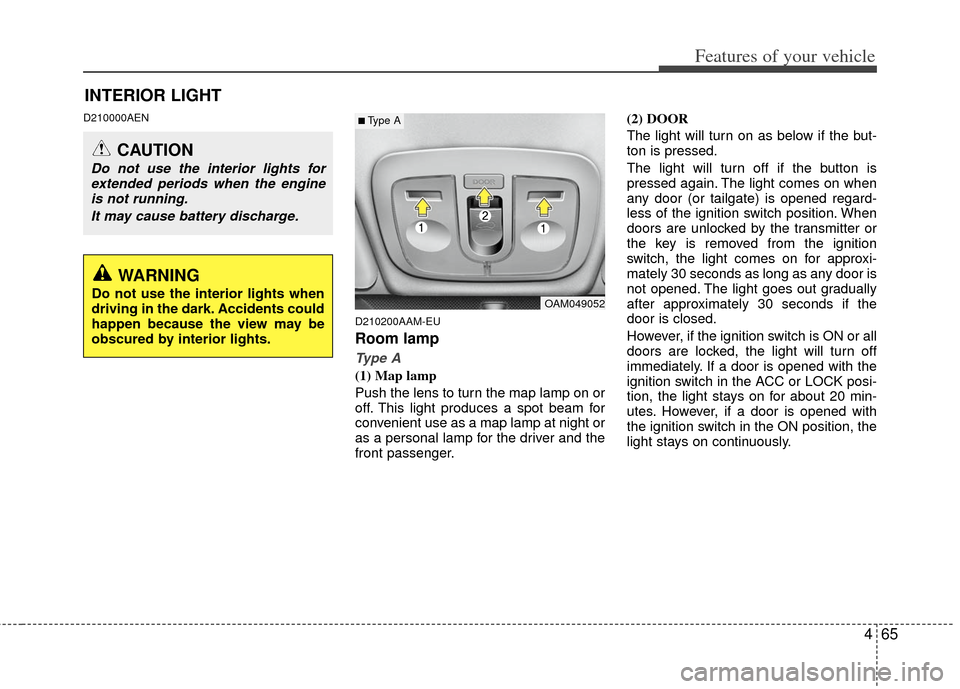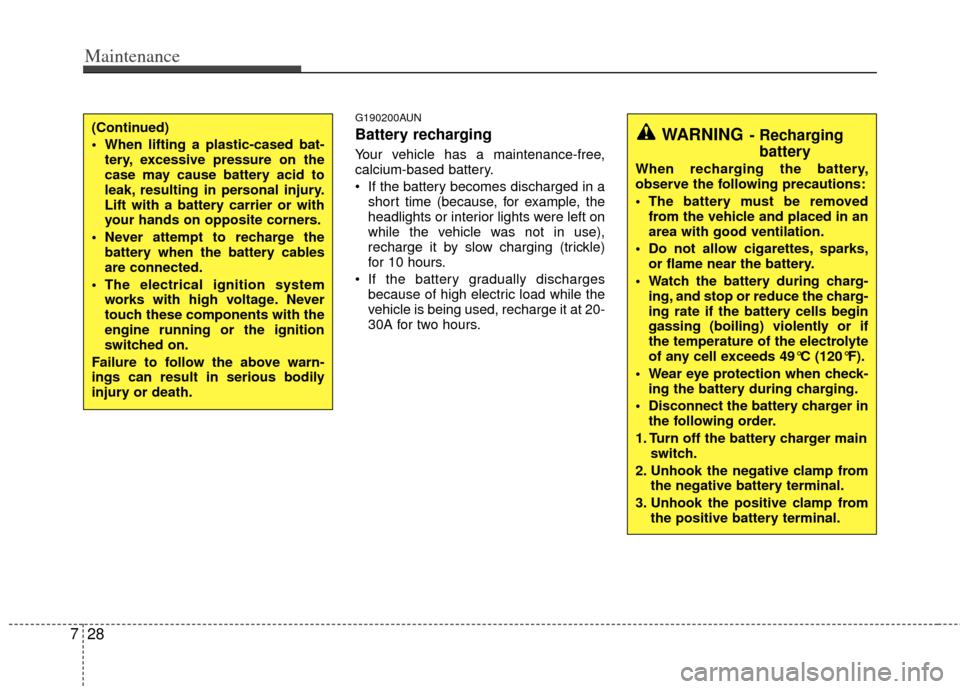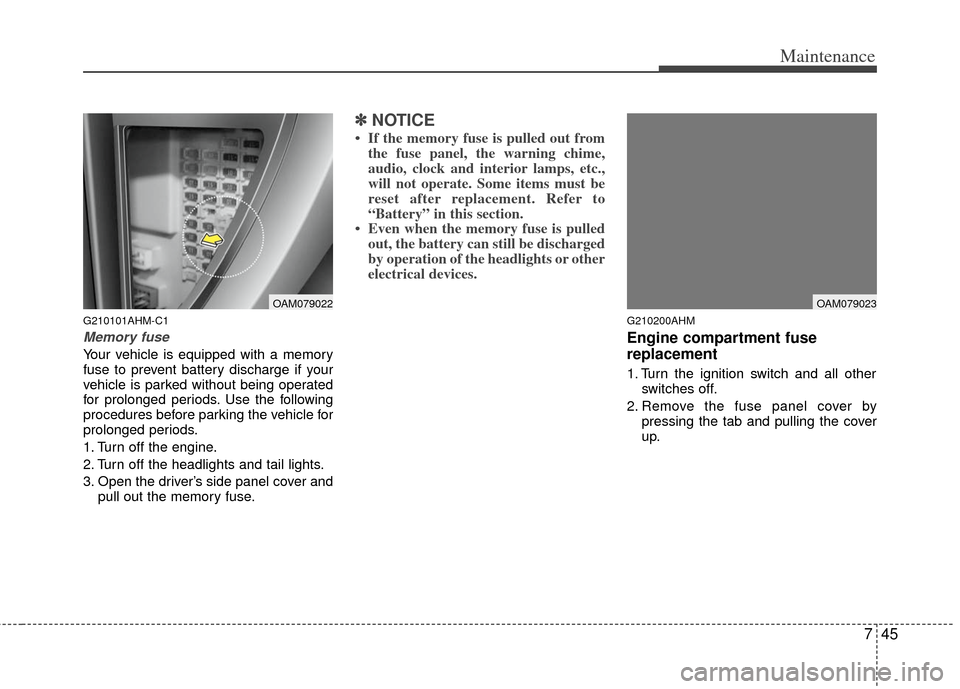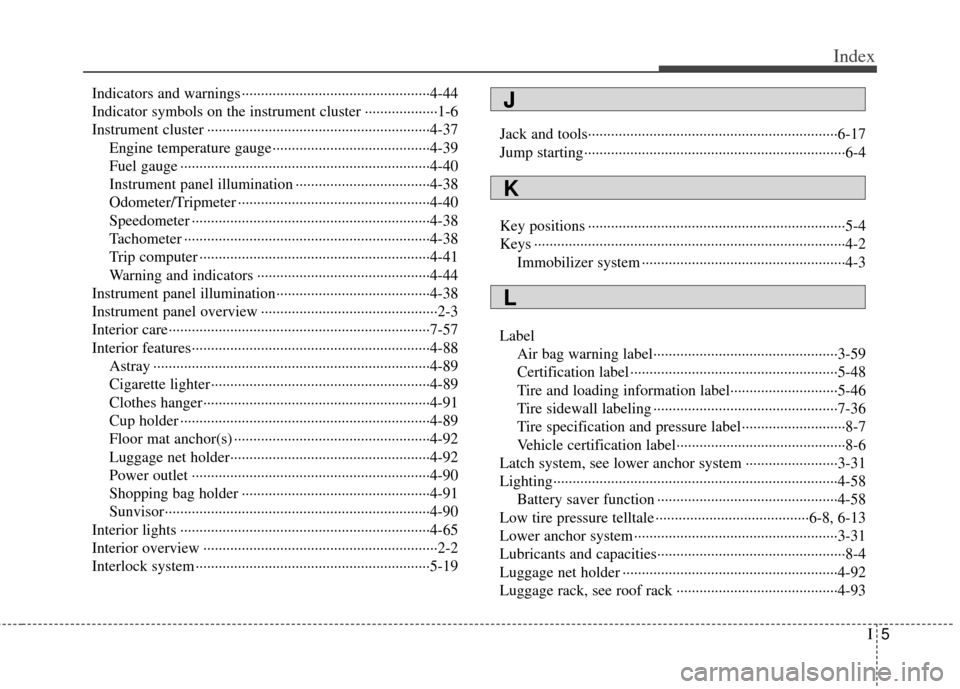2011 KIA Soul interior lights
[x] Cancel search: interior lightsPage 137 of 356

465
Features of your vehicle
D210000AEND210200AAM-EU
Room lamp
Type A
(1) Map lamp
Push the lens to turn the map lamp on or
off. This light produces a spot beam for
convenient use as a map lamp at night or
as a personal lamp for the driver and the
front passenger.(2) DOOR
The light will turn on as below if the but-
ton is pressed.
The light will turn off if the button is
pressed again. The light comes on when
any door (or tailgate) is opened regard-
less of the ignition switch position. When
doors are unlocked by the transmitter or
the key is removed from the ignition
switch, the light comes on for approxi-
mately 30 seconds as long as any door is
not opened. The light goes out gradually
after approximately 30 seconds if the
door is closed.
However, if the ignition switch is ON or all
doors are locked, the light will turn off
immediately. If a door is opened with the
ignition switch in the ACC or LOCK posi-
tion, the light stays on for about 20 min-
utes. However, if a door is opened with
the ignition switch in the ON position, the
light stays on continuously.
INTERIOR LIGHT
CAUTION
Do not use the interior lights for
extended periods when the engineis not running.
It may cause battery discharge.
OAM049052
■Type A
WARNING
Do not use the interior lights when
driving in the dark. Accidents could
happen because the view may be
obscured by interior lights.
Page 308 of 356

Maintenance
28
7
G190200AUN
Battery recharging
Your vehicle has a maintenance-free,
calcium-based battery.
If the battery becomes discharged in a
short time (because, for example, the
headlights or interior lights were left on
while the vehicle was not in use),
recharge it by slow charging (trickle)
for 10 hours.
If the battery gradually discharges because of high electric load while the
vehicle is being used, recharge it at 20-
30A for two hours.
(Continued)
When lifting a plastic-cased bat-tery, excessive pressure on the
case may cause battery acid to
leak, resulting in personal injury.
Lift with a battery carrier or with
your hands on opposite corners.
Never attempt to recharge the battery when the battery cables
are connected.
The electrical ignition system works with high voltage. Never
touch these components with the
engine running or the ignition
switched on.
Failure to follow the above warn-
ings can result in serious bodily
injury or death.WARNING- Recharging battery
When recharging the battery,
observe the following precautions:
The battery must be removed
from the vehicle and placed in an
area with good ventilation.
Do not allow cigarettes, sparks, or flame near the battery.
Watch the battery during charg- ing, and stop or reduce the charg-
ing rate if the battery cells begin
gassing (boiling) violently or if
the temperature of the electrolyte
of any cell exceeds 49°C (120°F).
Wear eye protection when check- ing the battery during charging.
Disconnect the battery charger in the following order.
1. Turn off the battery charger main switch.
2. Unhook the negative clamp from the negative battery terminal.
3. Unhook the positive clamp from the positive battery terminal.
Page 325 of 356

745
Maintenance
G210101AHM-C1
Memory fuse
Your vehicle is equipped with a memory
fuse to prevent battery discharge if your
vehicle is parked without being operated
for prolonged periods. Use the following
procedures before parking the vehicle for
prolonged periods.
1. Turn off the engine.
2. Turn off the headlights and tail lights.
3. Open the driver’s side panel cover andpull out the memory fuse.
✽ ✽NOTICE
• If the memory fuse is pulled out from
the fuse panel, the warning chime,
audio, clock and interior lamps, etc.,
will not operate. Some items must be
reset after replacement. Refer to
“Battery” in this section.
• Even when the memory fuse is pulled out, the battery can still be discharged
by operation of the headlights or other
electrical devices.
G210200AHM
Engine compartment fuse
replacement
1. Turn the ignition switch and all other
switches off.
2. Remove the fuse panel cover by pressing the tab and pulling the cover
up.
OAM079022OAM079023
Page 352 of 356

I5
Index
Indicators and warnings ··················\
··················\
·············4-44
Indicator symbols on the instrument cluster ··················\
·1-6
Instrument cluster ··················\
··················\
··················\
····4-37Engine temperature gauge··················\
··················\
·····4-39
Fuel gauge ··················\
··················\
··················\
···········4-40
Instrument panel illumination ··················\
·················4-38\
Odometer/Tripmeter ··················\
··················\
··············4-40
Speedometer ··················\
··················\
··················\
········4-38
Tachometer ··················\
··················\
··················\
··········4-38
Trip computer ··················\
··················\
··················\
······4-41
Warning and indicators ··················\
··················\
·········4-44
Instrument panel illumination··················\
··················\
····4-38
Instrument panel overview ··················\
··················\
··········2-3
Interior care··················\
··················\
··················\
··············7-57
Interior features··················\
··················\
··················\
········4-88 Astray ··················\
··················\
··················\
··················\
4-89
Cigarette lighter··················\
··················\
··················\
···4-89
Clothes hanger··················\
··················\
··················\
·····4-91
Cup holder ··················\
··················\
··················\
···········4-89
Floor mat anchor(s) ··················\
··················\
···············4-92
Luggage net holder··················\
··················\
················4-92
Power outlet ··················\
··················\
··················\
········4-90
Shopping bag holder ··················\
··················\
·············4-91
Sunvisor··················\
··················\
··················\
···············4-90
Interior lights ··················\
··················\
··················\
···········4-65
Interior overview ··················\
··················\
··················\
·······2-2
Interlock system ··················\
··················\
··················\
·······5-19 Jack and tools··················\
··················\
··················\
···········6-17
Jump starting··················\
··················\
··················\
··············6-4
Key positions ··················\
··················\
··················\
·············5-4
Keys ··················\
··················\
··················\
··················\
·········4-2
Immobilizer system ··················\
··················\
·················4-3
Label Air bag warning label··················\
··················\
············3-59
Certification label ··················\
··················\
··················\
5-48
Tire and loading information label··················\
··········5-46
Tire sidewall labeling ··················\
··················\
············7-36
Tire specification and pressure label··················\
·········8-7
Vehicle certification label··················\
··················\
········8-6
Latch system, see lower anchor system ··················\
······3-31
Lighting··················\
··················\
··················\
··················\
··4-58 Battery saver function ··················\
··················\
···········4-58
Low tire pressure telltale ··················\
··················\
····6-8, 6-13
Lower anchor system ··················\
··················\
·················3-31\
Lubricants and capacities··················\
··················\
·············8-4
Luggage net holder ··················\
··················\
··················\
··4-92
Luggage rack, see roof rack ··················\
··················\
······4-93J
K
L